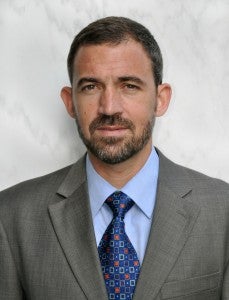 Yesterday the Ohio Senate passed Senate Bill 315, major energy legislation that addresses a wide range of issues – including provisions relating to transparency in oil and gas operations. Unfortunately, the version that passed falls short of Governor Kasich’s ambitious call for broad chemical disclosure.
Yesterday the Ohio Senate passed Senate Bill 315, major energy legislation that addresses a wide range of issues – including provisions relating to transparency in oil and gas operations. Unfortunately, the version that passed falls short of Governor Kasich’s ambitious call for broad chemical disclosure.
In the introduced version of the bill put forward by Governor Kasich and sponsored by Chairwoman Shannon Jones, companies would have been required to publicly disclose all chemicals used throughout the entire lifecycle of oil and gas wells – the so-called “spud to plug” approach to chemical reporting.
This comprehensive approach to chemical reporting stands in contrast to other state policies that merely require disclosure of those chemicals used in the hydraulic fracturing process. It reflects an understanding that a wide range of dangerous chemicals are used in drilling, stimulating, operating and closing wells, and regulators and the public need to know what’s being used in order to evaluate risks and put strong standards in place that protect communities and the environment. Governor Kasich deserves a lot of credit for advancing this idea in the original version of the bill.
Unfortunately, in the face of intense industry opposition the version of SB315 that passed yesterday eliminates much of the reporting that would have been required under the Governor’s original proposal.
The version of the bill that passed yesterday still has requirements for reporting the chemicals used in stimulating a well (which includes hydraulic fracturing). It also has requirements for reporting chemicals used for drilling the surface interval of a well. And it’s worth noting that the bill language for these provisions – while still needing improvements – is stronger than what was in the introduced version of the bill.
But the requirements for disclosing chemicals used for drilling beyond the surface interval were dropped – as were most of the requirements for disclosing chemicals used to service and operate the well. So, it’s now up to the Ohio House of Representatives to restore these important provisions. There’s a lot of nasty stuff that goes down a well during drilling and production. In fact, it tends to be the case that companies use increasingly dangerous chemicals the deeper they go in the drilling process. So, limiting disclosure of drilling fluids to just what’s used in the surface interval doesn’t make sense.
In addition to restoring the full “spud to plug” approach to the chemical reporting, the House also needs to add bill language ensuring that Ohio citizens can challenge any trade secret claims that companies may make to conceal the identity of chemicals. That’s just a basic necessity for policing the system and giving the public a reasonable level of confidence that companies are playing on the up and up.
Finally, the bill should be amended to begin the process of assessing and reporting the chemical composition of waste streams from oil and gas operations. Without an adequate picture of the chemical makeup of wastewater and other wastes that come from oil and gas operations, it is difficult to impossible to determine whether various methods of waste handling and disposal are protective of human health and the environment.
EDF was pleased to offer our support for the “spud to plug” concept embodied in the introduced version of the bill, but SB315 needs to be strengthened to earn our support going forward.
Transparency is just one small part of all that must to be done to ensure oil and gas operations are safe for communities and the environment, but it’s a critical piece of the puzzle that lays a foundation for developing protective rules and rebuilding the public trust. So EDF looks forward to working with our partners, leaders in the General Assembly and the Governor to make sure the final version of SB315 lives up to its full promise and sets Ohio on the right path for protecting communities and environment.









